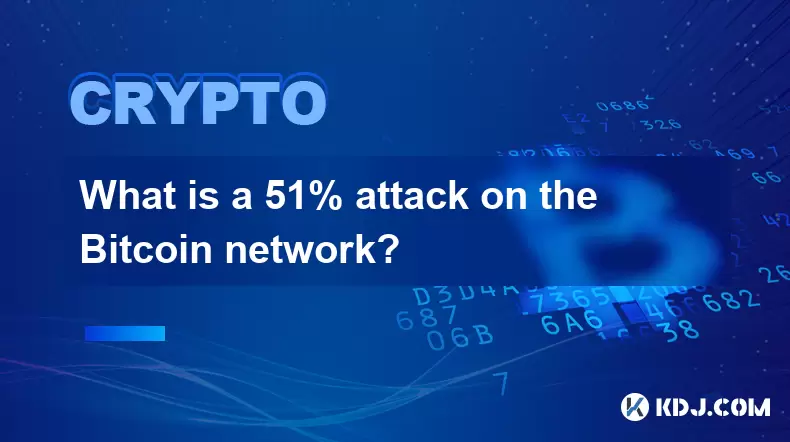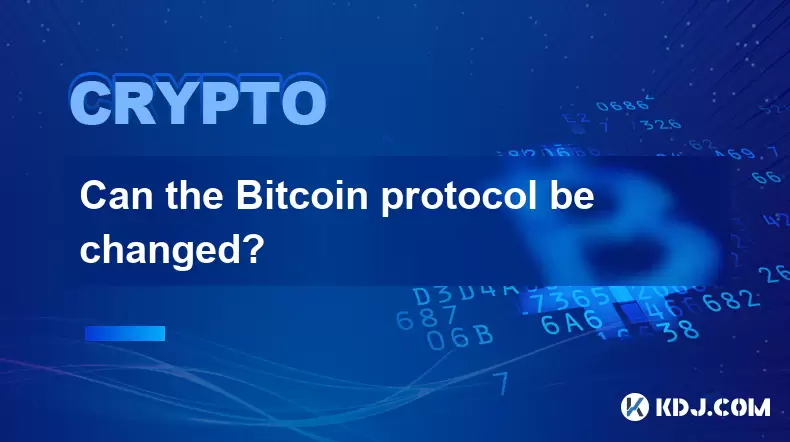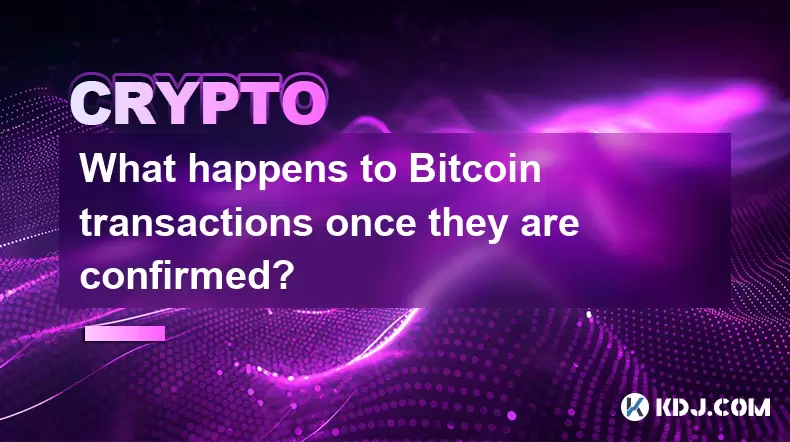-
 bitcoin
bitcoin $124586.364639 USD
0.62% -
 ethereum
ethereum $4670.671710 USD
3.33% -
 xrp
xrp $2.983701 USD
0.18% -
 tether
tether $1.000175 USD
-0.03% -
 bnb
bnb $1209.430642 USD
2.76% -
 solana
solana $231.365861 USD
0.51% -
 usd-coin
usd-coin $0.999665 USD
-0.02% -
 dogecoin
dogecoin $0.264657 USD
4.46% -
 tron
tron $0.346415 USD
1.60% -
 cardano
cardano $0.871586 USD
3.70% -
 chainlink
chainlink $23.451270 USD
7.56% -
 hyperliquid
hyperliquid $46.860071 USD
-2.96% -
 ethena-usde
ethena-usde $1.000120 USD
0.04% -
 sui
sui $3.611279 USD
1.08% -
 stellar
stellar $0.407149 USD
0.96%
What is a 51% attack on the Bitcoin network?
A 51% attack occurs when a single entity controls over half of a blockchain’s hash power, enabling double-spending and transaction manipulation, though not fund theft.
Aug 12, 2025 at 06:08 pm

Understanding the Concept of a 51% Attack
A 51% attack on the Bitcoin network refers to a scenario where a single entity or group gains control over more than half of the network's total hashing power, also known as computational power or hash rate. This dominance allows the attacker to manipulate the blockchain in specific ways, primarily by altering the order of transactions, preventing new transactions from being confirmed, or even reversing their own transactions to enable double-spending. While such an attack does not allow the creation of new bitcoins out of thin air or the theft of funds from unrelated addresses, it undermines the trust and integrity of the decentralized consensus mechanism.
Bitcoin relies on a proof-of-work (PoW) system, where miners compete to solve complex cryptographic puzzles. The first miner to solve the puzzle gets to add a new block to the blockchain and is rewarded with newly minted bitcoins. The longest valid chain is accepted by the network as the true version of the ledger. If an attacker controls over 50% of the mining power, they can consistently outpace the rest of the network in adding new blocks, enabling them to overwrite or exclude transactions.
How a 51% Attack Works Technically
To execute a 51% attack, the malicious actor must deploy a vast amount of mining hardware, such as ASICs (Application-Specific Integrated Circuits), and consume enormous amounts of electricity. The process involves the following steps:
- The attacker secretly mines a private version of the blockchain, keeping it hidden from the public network.
- During this time, they continue spending bitcoins on the public chain—such as purchasing goods or converting BTC to fiat on exchanges.
- Once the private chain becomes longer than the public one, the attacker broadcasts it to the network.
- Nodes on the network accept the longer chain as valid, causing a chain reorganization.
- Transactions on the public chain that conflict with the private chain are invalidated, allowing the attacker to reclaim the bitcoins they previously spent.
This reversal of confirmed transactions is known as double-spending. For example, if the attacker sends 10 BTC to an exchange and receives USD in return, they can later reverse that transaction by replacing the block containing it, effectively keeping both the BTC and the USD.
Impact on Transaction Security and Network Trust
When a 51% attack occurs, the most immediate consequence is the erosion of trust in transaction finality. Users and exchanges typically wait for multiple confirmations (usually 6) before considering a transaction irreversible. However, under a 51% attack, even confirmed transactions can be undone. This makes the network unreliable for high-value transactions or time-sensitive operations.
Exchanges may halt withdrawals or deposits during suspected attacks to prevent financial losses. Merchants accepting Bitcoin payments could be defrauded if they deliver goods after a few confirmations, only to have the payment reversed. The decentralized nature of Bitcoin is compromised because one entity holds disproportionate influence over the network’s operation.
It is important to note that while the attacker can reverse their own transactions, they cannot alter transactions they do not control. This means they cannot steal bitcoins from other users’ wallets unless those users are directly involved in a transaction with the attacker.
Historical Instances and Smaller Blockchain Vulnerabilities
Although Bitcoin itself has never suffered a successful 51% attack due to its immense hash rate, smaller cryptocurrencies using similar proof-of-work mechanisms have been compromised. For instance:
- Bitcoin Gold (BTG) experienced multiple 51% attacks in 2018 and 2020, resulting in significant double-spending incidents.
- Verge (XVG) was attacked in 2018, allowing attackers to mine thousands of coins in a short period.
- Ethereum Classic (ETC) faced repeated attacks in 2019 and 2020, with large blocks being reorganized.
These incidents highlight that networks with lower hash rates are far more vulnerable. The cost of acquiring 51% of Bitcoin’s hash rate is estimated to be in the billions of dollars, making such an attack economically impractical. However, for smaller chains, the required investment is much lower, creating opportunities for malicious actors.
Prevention and Mitigation Strategies
While no system is entirely immune, several measures can reduce the risk and impact of a 51% attack:
- Increasing the number of confirmations required for high-value transactions. Exchanges often require 10, 20, or even more confirmations for large deposits.
- Monitoring hash rate distribution through blockchain explorers and mining pool dashboards. Sudden concentration of mining power in one pool raises red flags.
- Using checkpointing, where trusted nodes enforce certain blocks as immutable at specific heights. This is used sparingly to avoid centralization.
- Adopting alternative consensus mechanisms, such as proof-of-stake (PoS), which make 51% attacks economically prohibitive due to staking penalties.
Network participants can also encourage mining decentralization by supporting smaller mining pools and avoiding over-reliance on a single provider. Some projects implement hash rate monitoring alerts that notify administrators of suspicious activity, enabling faster response times.
Can a 51% Attack Destroy Bitcoin?
A successful 51% attack would not destroy Bitcoin, but it would severely damage its reputation. The economic cost of launching such an attack on Bitcoin is prohibitively high. The current global hash rate exceeds 500 exahashes per second (EH/s), requiring an attacker to deploy millions of dollars worth of mining equipment and incur massive electricity costs.
Moreover, if an attack were detected, the community could respond by forking the protocol to render the attacker’s hardware obsolete. This has precedent—Bitcoin Cash and Bitcoin SV were created through hard forks in response to ideological disagreements. A coordinated response could invalidate the attacking chain and restore consensus on a modified version of the blockchain.
The game-theoretic incentives in Bitcoin also discourage such attacks. Miners earn rewards by behaving honestly. Diverting resources to attack the network risks devaluing the very asset they are mining, making the attack self-defeating.
Frequently Asked Questions
What prevents a mining pool from launching a 51% attack?Mining pools are collections of individual miners who combine hash power. Even if a pool approaches 50% hash rate, miners can voluntarily leave to preserve decentralization. Pool operators do not have unilateral control over members' hardware, and sustained dominance would trigger community backlash and protocol adjustments.
Can a 51% attack steal my Bitcoin?No. A 51% attack cannot access private keys or transfer funds from addresses the attacker does not control. It only allows manipulation of transaction order and double-spending of the attacker’s own coins.
How can I protect myself from a 51% attack?Wait for a higher number of confirmations—especially for large transactions. Use services that monitor chain reorganizations and avoid accepting payments on low-hash-rate networks without additional safeguards.
Is cloud mining a risk for 51% attacks?Cloud mining itself is not inherently risky, but if a single provider controls a large share of rented hash power, it could concentrate influence. Always assess the provider’s transparency and hash rate distribution.
Disclaimer:info@kdj.com
The information provided is not trading advice. kdj.com does not assume any responsibility for any investments made based on the information provided in this article. Cryptocurrencies are highly volatile and it is highly recommended that you invest with caution after thorough research!
If you believe that the content used on this website infringes your copyright, please contact us immediately (info@kdj.com) and we will delete it promptly.
- BlockDAG, DOGE, HYPE Sponsorship: Crypto Trends Shaping 2025
- 2025-10-01 00:25:13
- Deutsche Börse and Circle: A StableCoin Adoption Powerhouse in Europe
- 2025-10-01 00:25:13
- BlockDAG's Presale Buzz: Is It the Crypto to Watch in October 2025?
- 2025-10-01 00:30:13
- Bitcoin, Crypto, and IQ: When Genius Meets Digital Gold?
- 2025-10-01 00:30:13
- Stablecoins, American Innovation, and Wallet Tokens: The Next Frontier
- 2025-10-01 00:35:12
- NBU, Coins, and Crypto in Ukraine: A New Yorker's Take
- 2025-10-01 00:45:14
Related knowledge

Why is Bitcoin considered a revolutionary technology?
Aug 12,2025 at 08:29pm
Decentralization and the Elimination of Central AuthoritiesThe core innovation behind Bitcoin lies in its decentralized architecture, which fundamenta...

Why is Bitcoin considered a revolutionary technology?
Aug 10,2025 at 07:42pm
Decentralized Architecture and Trustless TransactionsBitcoin is considered revolutionary because it introduced a decentralized architecture that opera...

What are the key features of Bitcoin?
Aug 10,2025 at 02:50am
Decentralization and Peer-to-Peer NetworkOne of the most defining characteristics of Bitcoin is its decentralized nature. Unlike traditional financial...

Can the Bitcoin protocol be changed?
Aug 07,2025 at 01:16pm
Understanding the Bitcoin ProtocolThe Bitcoin protocol is the foundational set of rules that govern how the Bitcoin network operates. It defines every...

Can the Bitcoin protocol be changed?
Aug 11,2025 at 01:01am
Understanding the Bitcoin Protocol StructureThe Bitcoin protocol is the foundational set of rules that govern how the Bitcoin network operates. These ...

What happens to Bitcoin transactions once they are confirmed?
Aug 09,2025 at 05:22am
Understanding Bitcoin Transaction ConfirmationWhen a Bitcoin transaction is initiated, it is broadcast to the network and placed in a pool of unconfir...

Why is Bitcoin considered a revolutionary technology?
Aug 12,2025 at 08:29pm
Decentralization and the Elimination of Central AuthoritiesThe core innovation behind Bitcoin lies in its decentralized architecture, which fundamenta...

Why is Bitcoin considered a revolutionary technology?
Aug 10,2025 at 07:42pm
Decentralized Architecture and Trustless TransactionsBitcoin is considered revolutionary because it introduced a decentralized architecture that opera...

What are the key features of Bitcoin?
Aug 10,2025 at 02:50am
Decentralization and Peer-to-Peer NetworkOne of the most defining characteristics of Bitcoin is its decentralized nature. Unlike traditional financial...

Can the Bitcoin protocol be changed?
Aug 07,2025 at 01:16pm
Understanding the Bitcoin ProtocolThe Bitcoin protocol is the foundational set of rules that govern how the Bitcoin network operates. It defines every...

Can the Bitcoin protocol be changed?
Aug 11,2025 at 01:01am
Understanding the Bitcoin Protocol StructureThe Bitcoin protocol is the foundational set of rules that govern how the Bitcoin network operates. These ...

What happens to Bitcoin transactions once they are confirmed?
Aug 09,2025 at 05:22am
Understanding Bitcoin Transaction ConfirmationWhen a Bitcoin transaction is initiated, it is broadcast to the network and placed in a pool of unconfir...
See all articles










































































